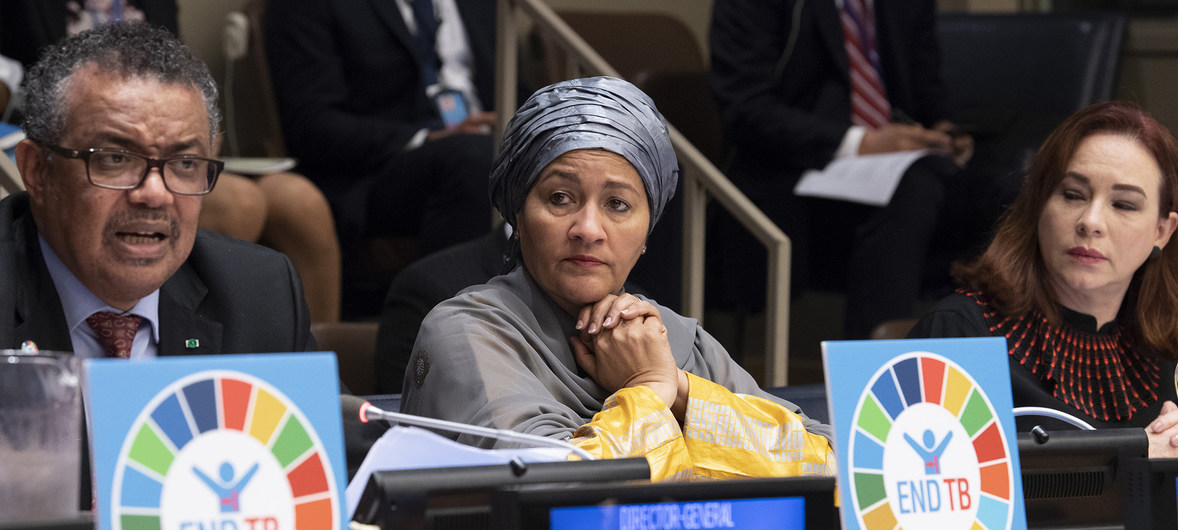The World Health Organisation (WHO) has issued new guidelines to improve the treatment of multi-drug resistant TB (MDR-TB).

The health agency in a statement released on Wednesday recommended shifting to fully oral regimens to treat people with MDR-TB.
It explained that the new treatment course is more effective and is less likely to provoke adverse side effects.
TB is a disease caused by bacteria that spread through the air from person to person. It is a potentially serious infectious disease that affects the lungs although it can spread to other organs.
If not treated properly TB can be a fatal disease.
Some TB patients usually develop MDR-TB, which is more difficult to treat. MDR-TB is a particular type of drug-resistant TB.
It means that the TB bacteria in a person infected are resistant to two of the most important TB drugs- isoniazid (INH) and rifampicin (RMP).
Previously, treatment for drug-resistant TB had often required a large number of drugs to be taken for up to two years.
Also, the drugs often caused severe side effects in patients. So various efforts were made to develop shorter regimens which were easier to take
Shorter regimens
In May 2016, the WHO recommended that there should be a major change to the treatment for drug-resistant TB with shorter regimens being made available for many patients.
However, WHO in its new guideline recommended backing up treatment with active monitoring of drug safety and providing counselling support to help patients complete their treatment.
WHO said the recommendations are part of a larger package of actions designed to help countries increase the pace of progress to end TB and released in advance of World TB Day.
The World TB Day is observed March 24 each year.
The day is set aside to create public awareness about the devastating health, social and economic consequences of the disease.
The theme of this year’s World TB Day, “It’s time to end TB.”
WHO Director-General, Tedros Adhanom, said the bod is highlighting the urgent need to translate commitments made at the 2018 UN High-Level Meeting on TB into actions that ensure everyone who needs TB care can get it.
He said since 2000, 54 million have been treated, and TB deaths fell by one third, but 10 million people still fall ill with TB every year, with too many missing on vital care.
TB remains the world’s deadliest infectious killer disease.
Each year, nearly 4,500 people lose their lives to TB and about 30,000 people fall ill with the disease.
Nigeria still ranks among countries with the highest burden of the diseases. At least 18 Nigerians die from the disease every hour.
With only 25 per cent detection rate, Nigeria is classified among countries with a high burden for TB, TB/HIV and MDR-TB and currently ranks sixth globally and first in Africa.
Nigeria contributes nine per cent to the global 3.6 million missing TB cases, coming behind only India and Indonesia with 26 per cent and 11 per cent respectively.
An estimated 418,000 new TB cases occurred in Nigeria in 2018.
New package
WHO said the new drug package is designed to help countries close gaps in care ensuring no one is left behind.
Tereza Kasaeva, Director WHO’s Global TB Programme.said this is a set of pragmatic actions that countries can use to accelerate progress and act on the high-level commitments made in the first-ever UN High-Level Meeting on TB last September.
On March 22, key partners will come together at a World TB Day symposium at WHO in Geneva to develop a collaborative multi-stakeholder and multisectoral platform to accelerate actions to end TB. WHO will also present the new package at the meeting.
Quick facts about TB
- It is an airborne disease. It spreads when an infected person coughs or sneezes.
- TB is partly preventable by vaccine
- Most people infected with TB bacteria don’t have symptoms.
- When symptoms do occur, they usually include a cough (sometimes blood-tinged), weight loss, night sweats and fever.
- Treatment isn’t always required for those without symptoms. Patients with active symptoms will require a long course of treatment involving multiple antibiotics.
- The disease is treatable and curable
- DR-TB is common among persons who do not take their TB drugs regularly
- In a person infected with both HIV and TB, the HIV weakens the immune system so inactive TB germs are more likely to become active leading to an active case of T.
- HIV increases the chances of re-infection and relapse in persons treated for TB
- All TB patients and suspected should be tested for HIV
- When you are coughing for more than two weeks, go for a TB test.
Kindly follow us on twitter:@AfricanVoice2










